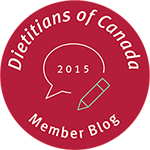If you use reward-based systems in your classroom, we’ve got some food for thought for you.
Should I use food as a reward?
“Anyone who is extra helpful will get a candy.”
“If everyone is well-behaved today, we’ll have cupcakes.”
Have you found yourself using food as a bribe to encourage good behaviour in the classroom? Many of us resort to these tactics because they work—in the short run. But you may want to consider this: Research shows that using food as a reward can have negative consequences that go far beyond the short-term benefits of good behaviour or performance1. It interferes with eating in response to hunger. It encourages over-eating, and can lead to problems with responding properly to hunger and fullness cues2. In addition, when you are using a sweet food as a reward, you end up teaching children that those are more desirable foods, which leads them to prefer them over other healthy foods and contradicts classroom learning about healthy eating3.
Can food be used in the classroom?
Yes! By all means we encourage you to use food in the classroom—but not as a reward. Teachers are in a great position to be good role models by eating healthy foods and staying active4. Teachers can also use food as an educational tool. If you’re interested in using food in the classroom, check out this article for some ideas or book a nutrition workshop to learn more about incorporating nutrition education into the curriculum.
What can I use as a reward instead of food?
Many teachers use non-food rewards such as extra free time, activity time, or computer time, longer recess, stickers, privileges such as sitting next to a friend, choosing a book to be read to the class, or leading a class game5.
Should I use rewards in my classroom?
While reward-based systems in general are very popular, some question whether they help students in the long run. We’re not experts in that area but we recently asked a few BC teachers who don’t use individual rewards, what they do in their classroom. Here are a couple of quotes:
“We do a celebration of learning at the end of every unit involving games chosen by the students.”
“We do a day of learning outside to celebrate the end of term.”
Every class of students is unique, as is every teacher. What works for one group may not work for another. We know classroom management can be challenging and we appreciate every teacher’s efforts to foster an effective and supportive learning environment for students.
What do you think?
By Nicole Spencer, MEd, RD

References
- Birch LL. Development of food preferences. Annual Review of Nutrition, 19:41-62, 1999.
- Dulude G, Marquis M. Relations entre les pratiques alimentaires maternelles et l’alientations d’enfants québécois d’âge prescolaire. Canadian J Diet Pract and Res. 74:119–123, 2013.
- Story M, Nanney MS, Schwartz MB. Schools and obesity prevention: creating school environments and policies to promote healthy eating and physical activity. Milbank Quarterly, 87: 71–100, March 2009.
- Picard A. “Children need role models, and inspiring surroundings.” Globe and Mail, Sept. 9, 2004.
- Action Schools! BC. Non-Food Rewards for Children and Youth. Accessed April 2, 2015 from http://www.actionschoolsbc.ca/sites/default/files/resources/AS%21%20BC%20Non-Food%20Rewards.pdf
